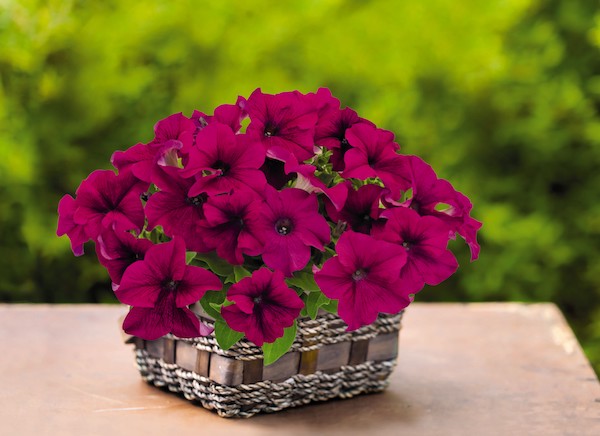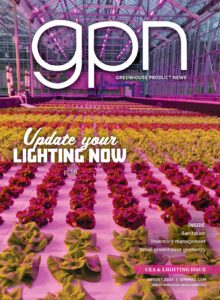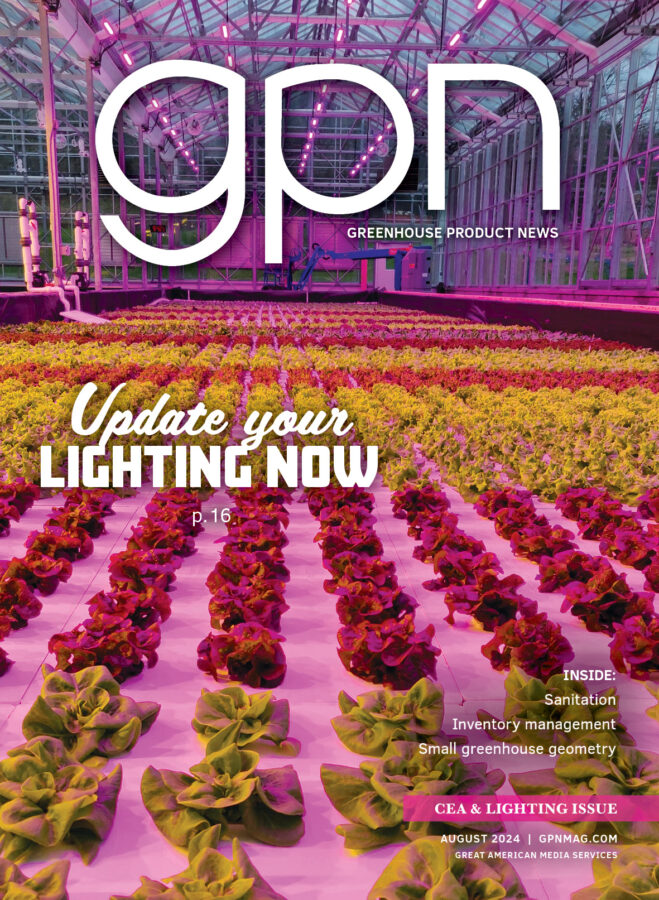
Culture Report: Petunia Success 360° Series
Consumers have ranked petunias as one of their top five favorite annuals for years. They love the easy care, brilliant colors and large flowers. But there hasn’t been a lot of new varieties to talk about, until now.
At the 2018 California Spring Trials, Benary introduced a new series that hopes to soon be the new gold standard for grandiflora petunias — SUCCESS! 360°. The series has uniform timing across colors all colors and was bred to bloom early in the pack, but the mounded habit and huge flowers are so versatile that you will want to use them in your premium and mixed container programs too.
The SUCCESS! 360° series has huge, well-formed flowers that come in 13 bold colors including two bi-colors. SUCCESS! 360° is not a replacement of the already popular SUCCESS! trailing petunias; it is just an extension to the brand. Like its siblings, SUCCESS! 360° is incredibly easy to grow. Here are some tips to help you get started.
GERMINATION
The total crop time you can expect from sow to finish is nine weeks for a pack and 13 weeks for a 10-inch basket.
SUCCESS! 360° petunias are facultative long day plants, so they will flower more quickly when young plants are given a long day treatment. Begin production when there is a minimum day length of 11.5 hours; or to initiate flowering under short days, extend the day length to at least 13.5 to 14 hours. Under long day and low light conditions, supplemental lighting may also be necessary.
Seeds prefer relatively warm temperatures (72 to 76°F) and high humidity (more than 95 percent) to germinate. Due to the small size of the seed, petunia SUCCESS! 360° is available in easy-to-sow pelleted seed. After sowing, the growing media needs to be saturated for the first three to four days to break down these pellets completely. For optimal germination it is recommended to provide 10 foot-candles of light and not to cover the seeds.
After sowing, do not allow the pellets to dry back before moving to the germination chamber or benches. Around day 5, after the pellets are dissolved completely and the radicle has emerged, you can start to dry back the media and reduce humidity to 40 to 60 percent with good airflow. Providing long days (14 to 16 hours) for the entire plug cycle makes plants initiate flowering earlier.
PLUG CULTURE
Plug timing in a 288 tray is four to five weeks.
By day 11 you can further reduce the moisture to a medium, reduce temperature to 65 to 68°F and start feeding at 50-ppm nitrogen. Reducing the humidity will help prevent seedling stretch. Provide proper ventilation and horizontal airflow to improve oxygen levels in the media.
As your SUCCESS! 360° seedlings get stronger, about day 14, you can initiate a wet-dry cycle by letting the media dry back slightly to a medium before re-saturating to a wet. You can also increase your feed to 100-ppm nitrogen (calcium or ammonium). If growth regulators are necessary, they can start to be applied at this stage.
Once seedlings root to edge of plug and have three to six true leaves, flower initiation will occur. This should be at about day 21. If flower initiation does not occur, it could be due to insufficient day length, temperatures under 60°F, or light levels less than 14 mols. Day length must be 13.5 to 14 hours to initiate flowering.
Fertilize established seedlings at 100- to 150-ppm nitrogen. Under high light conditions, apply an ammonium-based fertilizer (17-5-17) or (20-10-20). Under low light conditions, apply a calcium-based feed (14-4-14) or (15-15). Under high light and long or extended days, an ammonium-based feed (20-10-20) is preferred.
For more shoot growth, add an additional ammonium treatment to the schedule.
To prevent stretching under low light and cool temperatures, reduce ammonium and apply only calcium-based fertilizer. Pay attention to the addition of boron since low boron can cause tip abortion. Ideal boron concentration is 0.5 ppm.
Petunia SUCCESS! 360° are very responsive to B-Nine (daminozide) sprays in the early stages. PGRs can be applied as a spray to plugs as early as day 14. B-Nine is recommended, applied as a 2,500- to 5,000-ppm spray. Bonzi or Piccolo (paclobutrazol) sprays can also be used effectively. In the early stages, rates vary depending on temperature and light. Early applications as a spray at 2 to 3 ppm and later ones at 5 ppm. B-Nine is the primary PGR used until bud set. Over application after bud set can cause small or distorted flowers. A DIF of 5°F can also be very effective to control growth.

FINISHING
To help keep your petunia SUCCESS 360° plants more compact, keep the daytime temperatures above 55°F and night temperatures around 50°F. An average daily temperature of 67°F produces fastest crop, but cooler temperatures may help tone the plant. Temperatures below 60°F can cause ethylene damage resulting in cupped leaves.
Maintain the watering cycle allowing soil to dry back to medium before re-saturating to wet. Saturated soils for more than 72 hours can lead to tip abortion.
Feed at 100- to 200-ppm nitrogen. Use a calcium-based feed (14-4-14) to prevent stretching in lower light conditions and an ammonium-based feed (17-5-17 or 20-10-20) under higher light. Provide 3,500 to 5,000 foot-candles for 14- to 16-hour photoperiod. Yellow mature leaves can result from an ammonium and phosphorus deficiency.


 Video Library
Video Library 



















